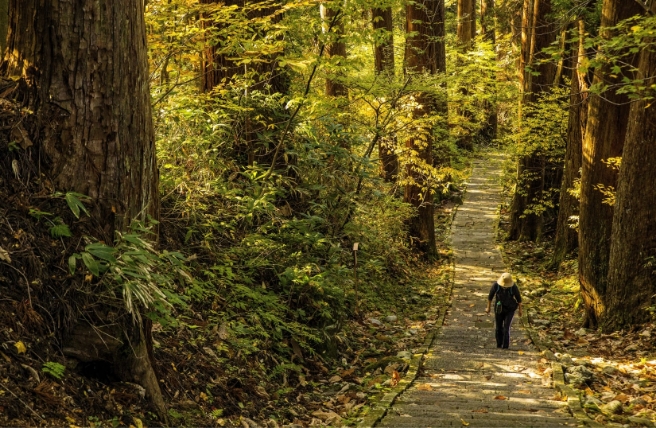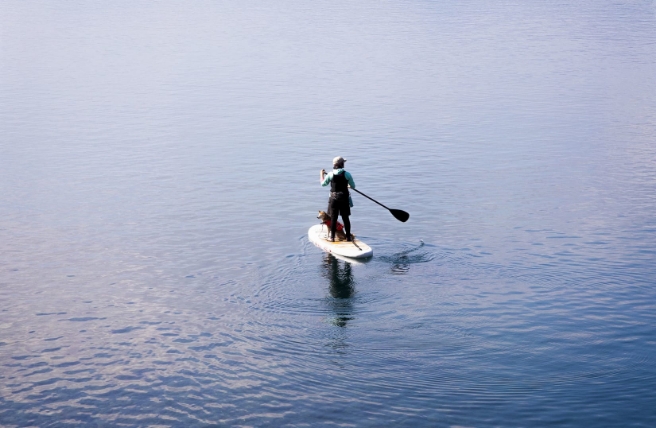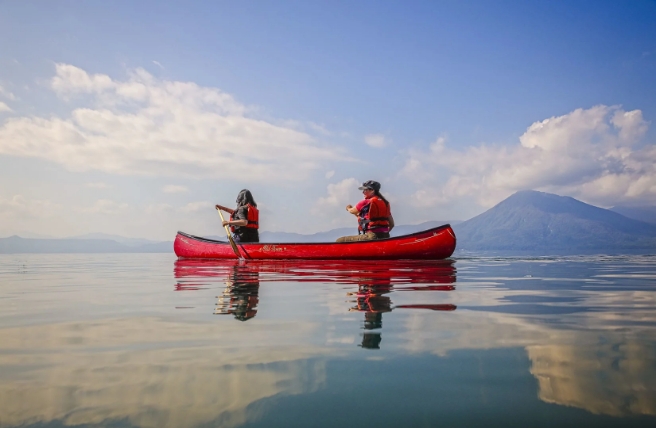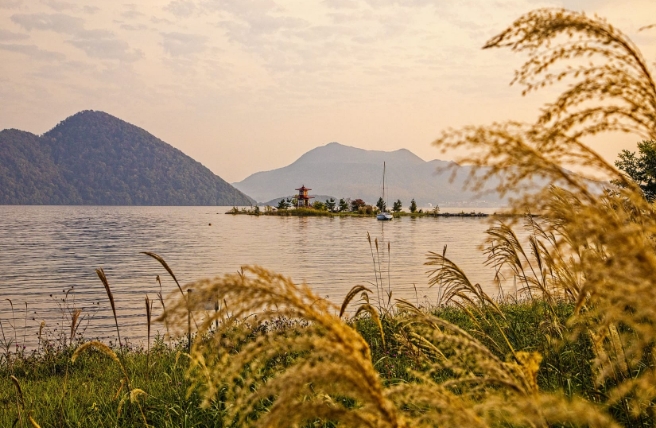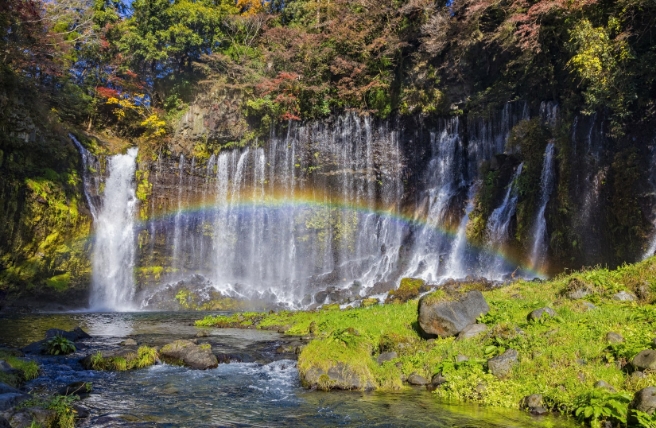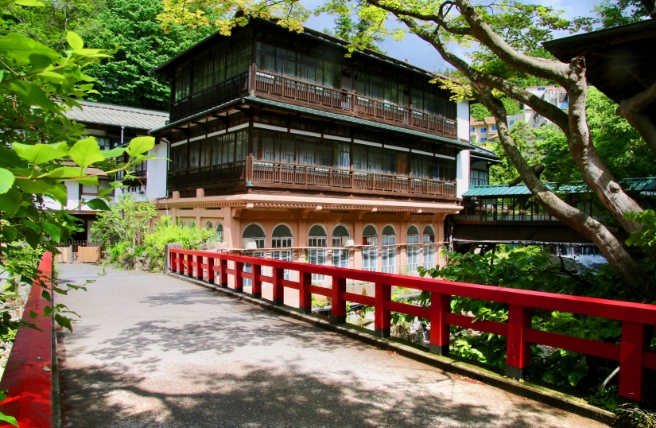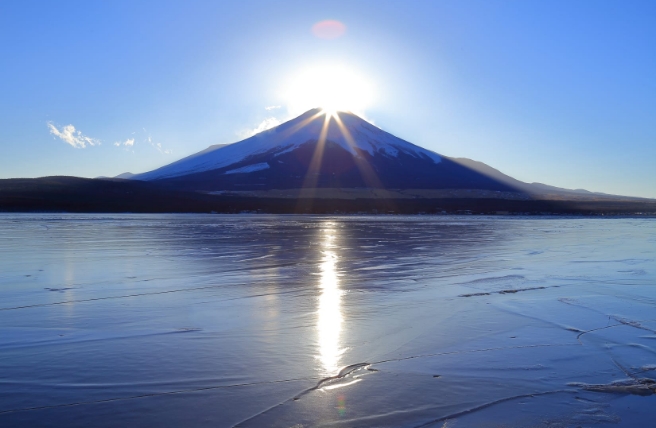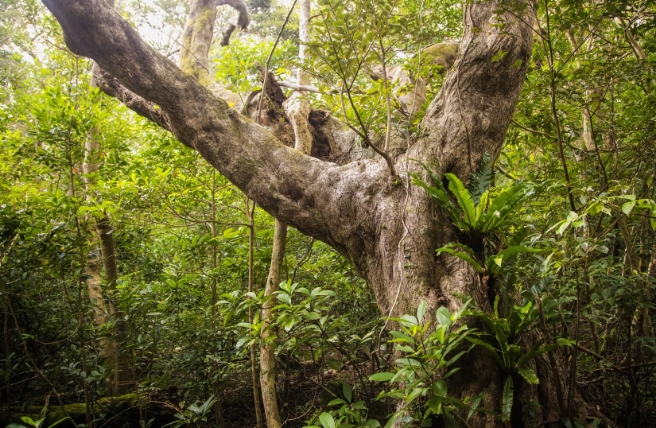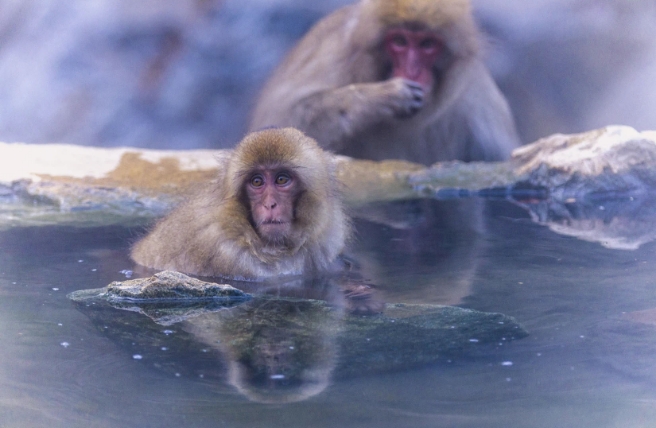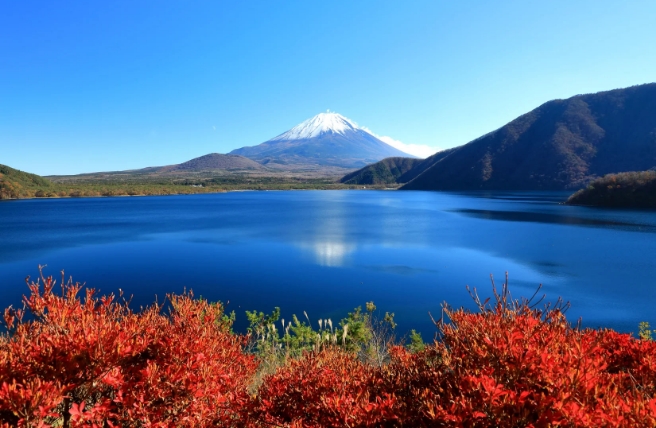Dewa Sanzan-Asahi Area
Dewa Sanzan refers to three sacred mountains in the center of Yamagata Prefecture. These peaks have been a center of worship for Japanese mountain ascetics, known as yamabushi or shugenja, for 1,400 years.
Experience the popular pilgrimage of rebirth by embarking on a multiday hike to all three peaks. Start at Mount Haguro—which represents birth—then trek to Mount Gassan, symbolizing death, and finally on to Mount Yudono, representing rebirth. Each mountain has a shrine near its peak, including a five-storied pagoda among cedar forests on Mount Haguro. This pagoda, built without nails and retaining its natural wood color, is designated a national treasure. The trek, which takes around two and a half days, reportedly has a profound spiritual effect on many hikers.
While at Mount Gassan, take time to visit Midagahara, a series of marshes blooming with alpine flowers. The Mount Gassan Visitor Center provides historical context as well as information on the topography and ecology of the area.
Further south, Mount Asahi offers some hiking terrain with a reputation for being some of the most challenging in Japan. If you’d like to test your stamina, the views over the surrounding peaks are worth the slog.
When you step out of the wilderness, visit the Yamagata Prefectural Nature Museum, which provides an overview of the area’s unspoiled nature while contributing to its preservation.

Midagahara Marsh
Iide Area
If you want to get away from it all, head for the stillness and solace of the Iide mountain range, where beech forests and marshes lined with alpine flowers provide wide expanses of picturesque wilderness.
Mount Iide (2,105 m) is the most famous of the 48 peaks in the Iide mountain range and makes for a satisfying hike. During this multiday hike, which is best left to advanced trekkers, you can stay in mountain huts and enjoy spectacular views of the beech forests and other peaks in the range below.
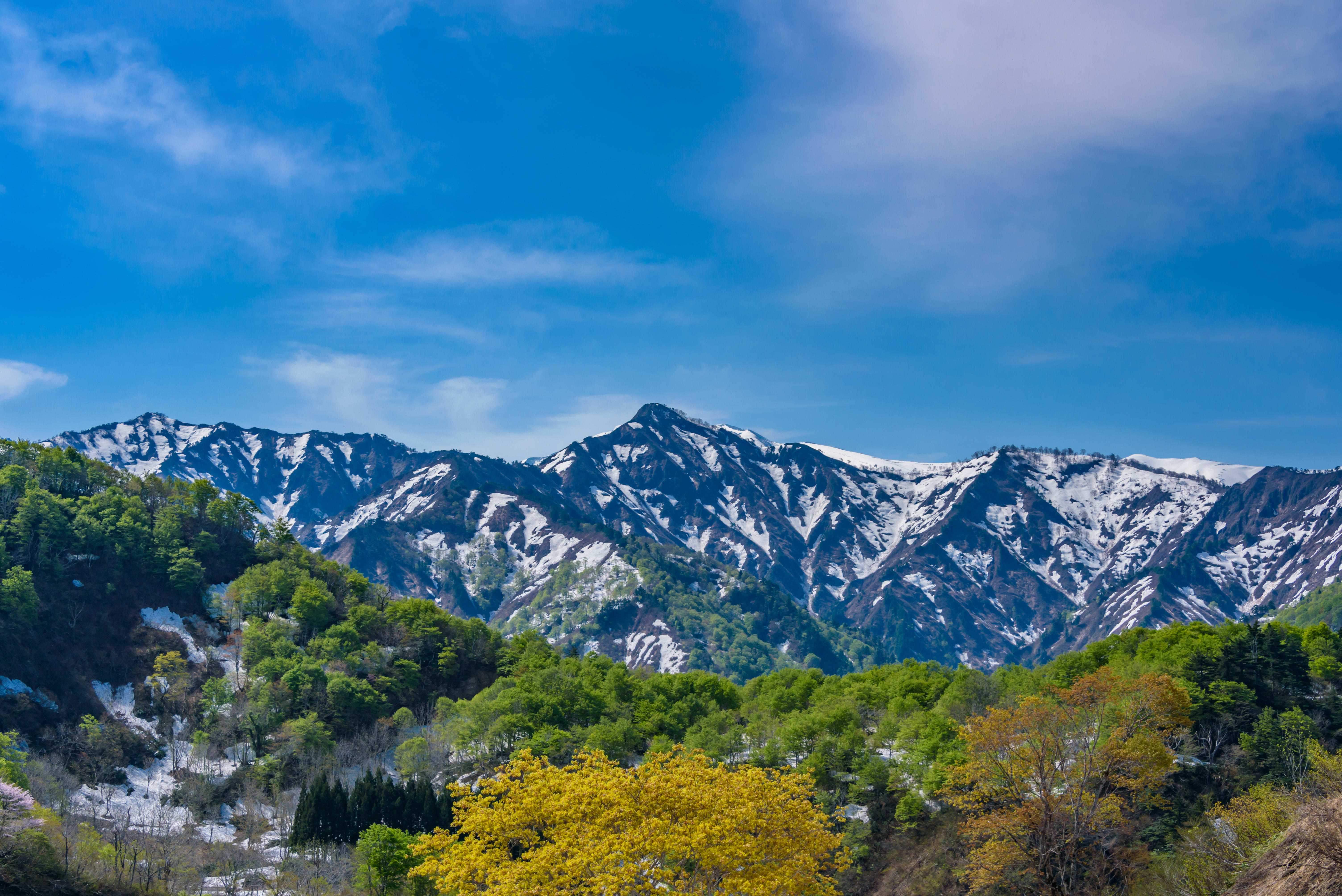
Iide mountain range
Bandaiazuma-Inawashiro Area
Urabandai, the area north of Mount Bandai, was dramatically reshaped by the 1888 eruption of this now-dormant volcano. You’ll see the scale of the affected area during a climb up the mountain, such as where one of Mount Bandai’s peaks collapsed, which caused landslides that dammed up the river, forming dozens of lakes and ponds. On the hike down, stop by Akanuma (copper pond), one of those the eruption created. This highly acidic lake on the northern flanks of Mount Bandai is rich in minerals and colored a brilliant yellow-green with a rusty tinge around the edges.
Akanuma is one of the Goshikinuma Ponds, the most famous of the watery bodies Mount Bandai’s eruption helped create. Take the short 90-minute loop from Urabandai Visitor Center to see some of this group of around 30 ponds and lakes. The ponds are famous for their vivid hues of blue, green, yellow and red, which vary depending on their pH levels, mineral content, the lighting and even where you stand on the water’s edge. Lake Goshikinuma, one of the most gorgeous of the group, is on a separate trail. Walk the picturesque 11 kilometers from the town of Takayu Onsen, crossing twice over the beautiful Bandai-Azuma Skyline until you reach the colorful lake.
Nearby are Lake Hibara and Lake Inawashiro, both popular for boating, camping and canoeing in warmer months, and ice fishing in winter. Lake Inawashiro, the fourth-largest freshwater body in Japan, is known as “Sky Mirror Lake.”
East of Lake Hibara is the Azuma mountain range. Visit the Jododaira Visitor Center for information on this range. Azuma-Kofuji Peak is particularly popular for its beautiful crater and lofty views of the surrounding region. The area is also home to the Jododaira Astronomical Observatory, which at 1,600 meters is the highest public observatory in Japan. Check its (irregular) opening hours for an evening of stargazing.
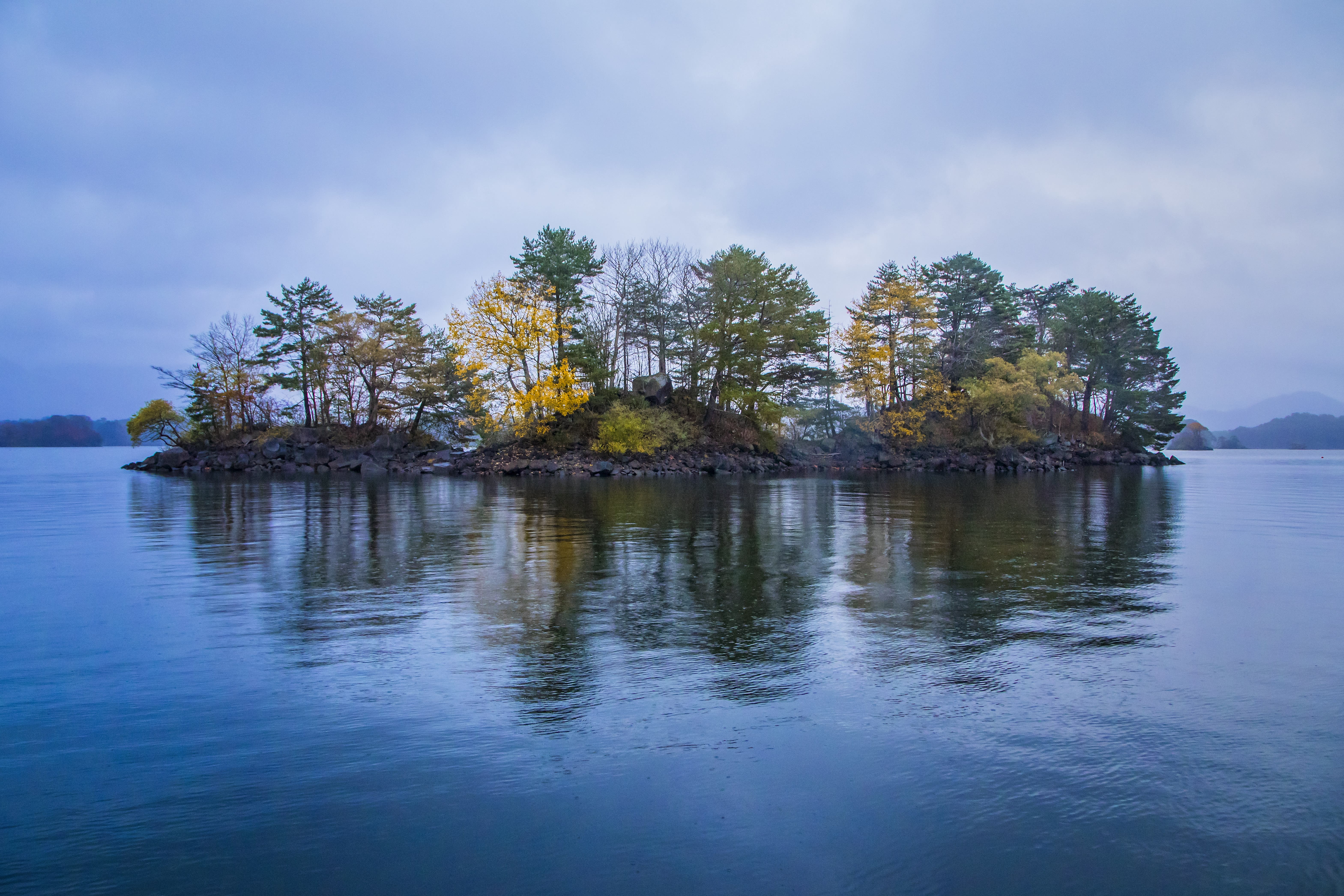
Lake Hibara
Culture
Shugendo, an ancient mountain ascetic religion that fuses Buddhism and Shinto, has thrived in this area for more than 1,400 years. Pilgrims, called yamabushi or shugenja, still roam the sacred mountains to visit the shrines of Dewa Sanzan on Mount Gassan, Mount Haguro and Mount Yudono.
Another sacred mountain, Mount Iide, was once used as an ascetic training ground. The founder of Shugendo, En no Ozunu, preached his teachings on this mountain from 652. Since then, it has been a place of pilgrimage. According to religious tradition, women were prohibited from climbing this mountain until the 1930s.
Hikers will be pleased to know there is a strong hot-spring culture in the region. For example, there are various hot springs around the Azuma mountain range, including Tsuchiyu Onsen, where you can ease sore muscles.

Path to Mount Haguro, one of the three mountains of Dewa Sanzan
